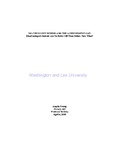No Child Left Behind and the Achievement Gap: Disadvantaged Students Are No Better Off Than Before. Now What?

View/
Author
Young, Angela L.
Subject
Washington and Lee University, Shepherd Poverty Program
Capabilities approach (Social sciences)
No Child Left Behind Act of 2001 (United States)
Poverty
Race discrimination
Educational accountability
Education -- Costs
Child development
Children -- Health and hygiene
Social justice
Metadata
Show full item recordDescription
Angela L. Young is a member of the Class of 2008 of Washington and Lee University. Capstone; [FULL-TEXT FREELY AVAILABLE ONLINE] It is clear that students are entering school with gaps, but from factors that are somewhat malleable. There is a potential for recovery from coming in with gaps, particularly related to health and nutrition. Tanner et al claims that “recovery may be possible with improved nutrition, environmental stimulation, and emotional support even if intervention occurs after the period of maximum brain growth” (187, Tanner et al). Schools can focus on creating a nutritious school meal program which might help, especially if there was the possibility to enact the program year-round, as summer years can put disadvantaged students behind again for the following school year. It is important that NCLB realizes that without early and sustained intervention, as well as better health care for all children and pregnant women, the achievement gap will continue and make job of diminishing the gap more difficult. If NCLB tackles the problem at its heart, however, and connects issues together, real progress can be made. [From Conclusion] Angela Young